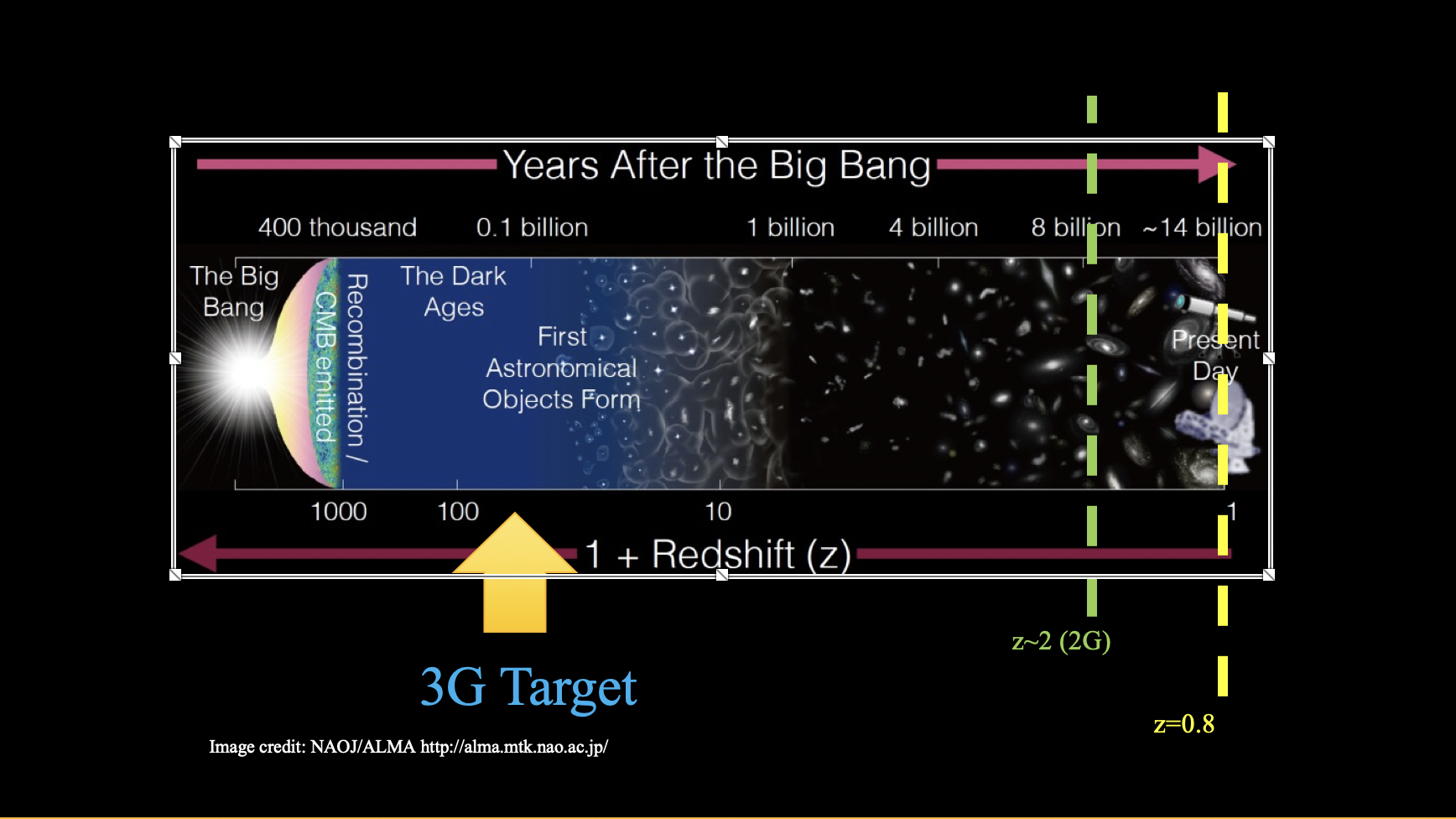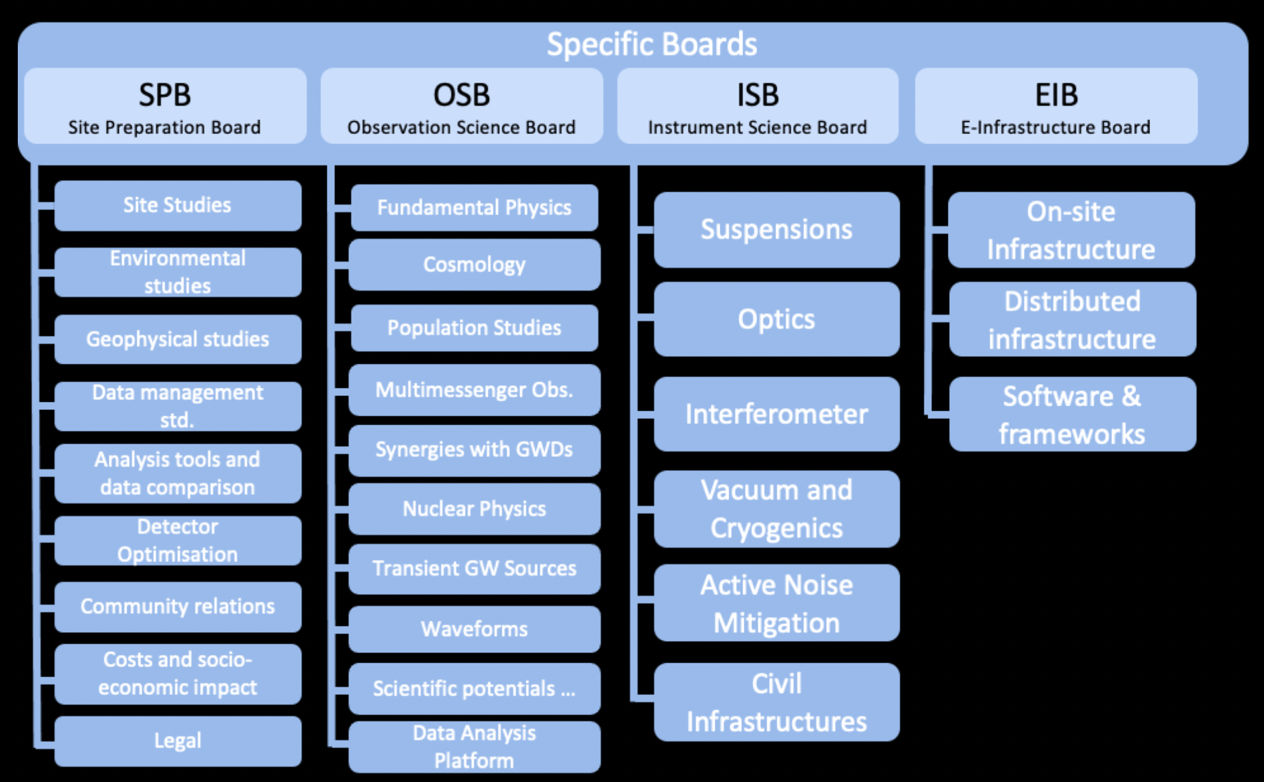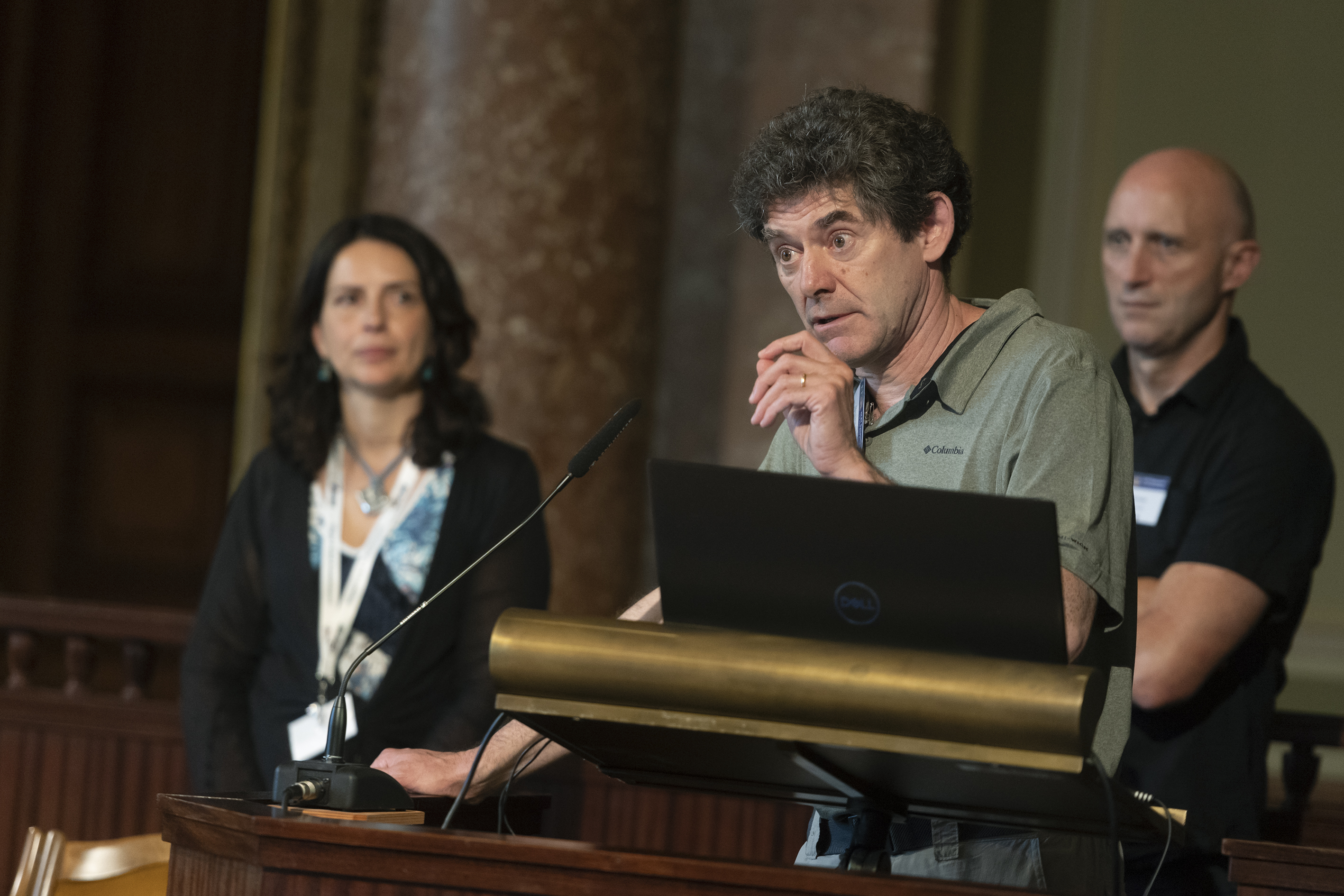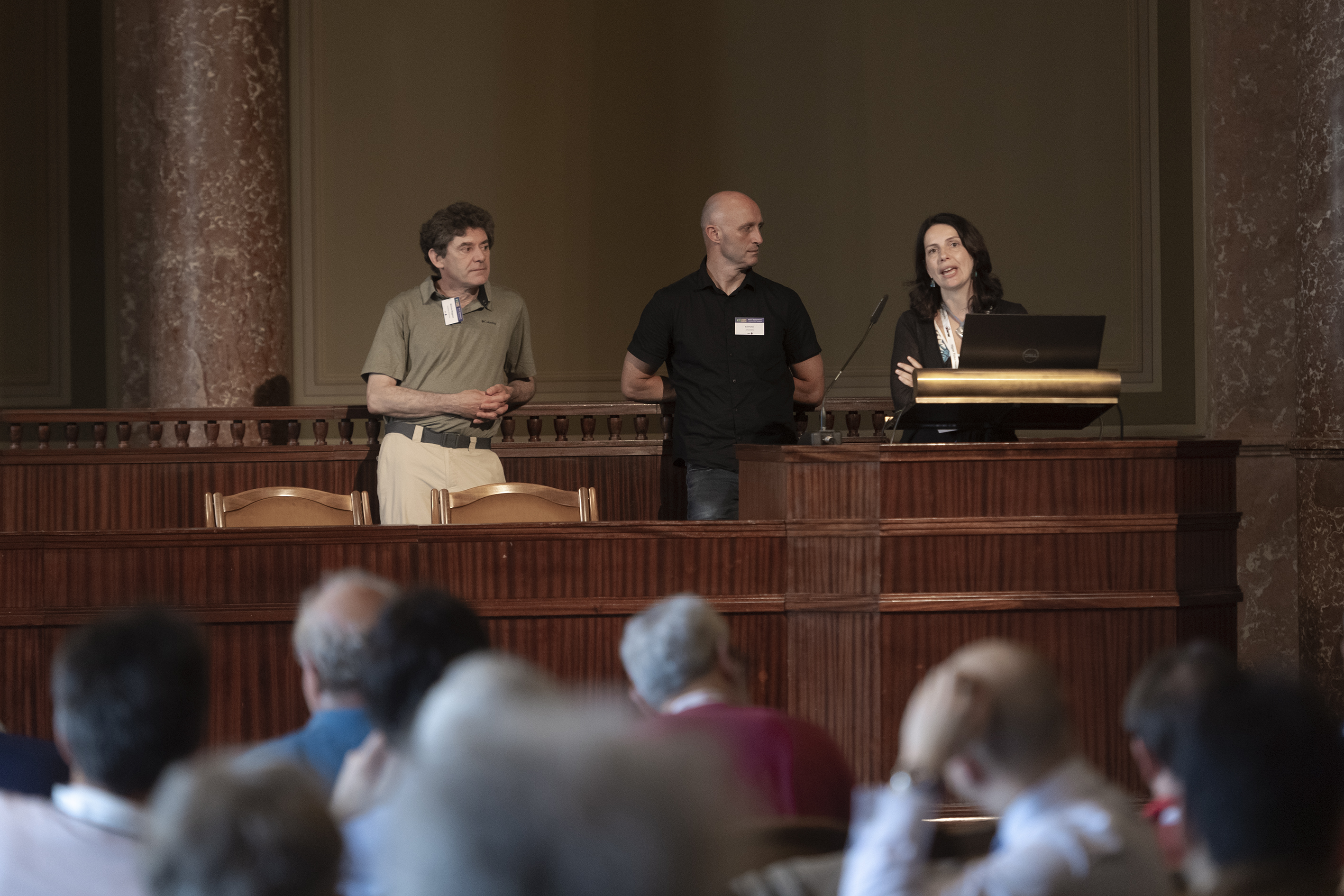

After the first direct detection of GWs from a binary black hole coalescence in 2015 (which was awarded with the 2017 Nobel Prize ),
LIGO and Virgo have been alternating observational runs with periods devoted to the improvement of the detectors. At the level of the last observing run (O3) the detection of GWs from coalescing binaries has become a routine, with events observed weekly.
The current catalog of GW detections now contains about 90 binary black hole coalescences, as well as two binary neutron stars coalescences and two neutron star-black hole coalescences (Fig.1).
These discoveries are already having a significant impact on astrophysics, and also provide first important results on fundamental physics.
Third-generation (3G) GW detectors such as Einstein Telescope in Europe and Cosmic Explorer in the US aim at an improvement in the sensitivity by one order of magnitude, together with a significant enlargement of the bandwidth, both toward low and high frequencies.
With such sensitivities, the scientific potential of 3G detectors are extraordinary. For instance, one expects to detect of order 105 BBH and BNS coalescences per year, reaching redshifts of order 50-100, therefore covering all the period of the Universe from the `dark ages' through the recent cosmological epochs.
ET is expected to become operative around 2035.
In June 2021 ET was included into the ESFRI Roadmap, the Roadmap of the large European Research Infrastructures. This was a crucial step toward approval of the project. From the ESFRI press release :
There is a new level of ambition to develop globally unique, complex facilities for frontier science: Einstein Telescope – highest value project ever on the Roadmap - EUR 1'900 million, [...]
I coordinated the work presenting the Science Case for ET, for our succesfull ESFRI package submission. The document is published as
M. Maggiore et al., Science Case for the Einstein Telescope, JCAP 03 (2020) 050,
arXiv:1912.02622 .
Follow the Research link in my homepage for a description of my ET-related research.

The ET collaboration was formally created at the XII Einstein Telescope Symposium in Budapest in June
2022, and now counts more than 1400 members. I am a member of the ET Executive Board, the governing body of the collaboration.
The activities of the collaboration are organized into a set of Specific Boards, see Fig. 3. I contributed to defining the mission, scope and organization of the ET Observational Science Board (OSB) , which is in charge of all the science aspects of ET.
Together with Marica Branchesi and Archisman Ghosh (earlier Ed Porter), I currently co-chair the OSB.
The OSB includes more than 750 members, and is organized in 10 thematic divisions (see Fig. 3), each with 3 coordinators.


The video recording of some recent Colloquia that I have given on ET:
Colloque at CERN , 14/12/2022.
Colloque in IFIC-Valencia , 19/01/2023